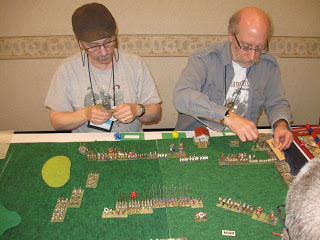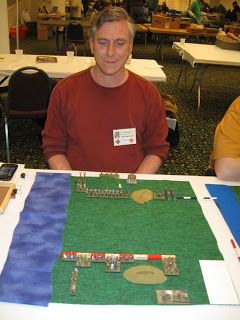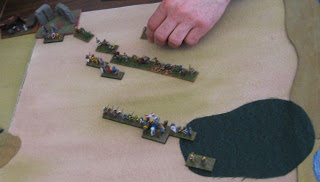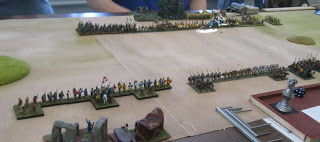I did some research before settling on how I wanted to paint my Medieval German army. Eventually I found the alliance between King Valdemar II of Denmark and his nephew Otto I, Duke of Brunswick (later, Brunswick-Lüneburg). I chose the coat of arms of Brunswick: “Gules, two lions passant guardant or.” I’m confident that the coat of arms I chose is accurate for Brunswick during this time, but I’m not sure if I’m using it in the way it would have been used historically.
I wanted heraldry accurate for the troops of Otto I, around 1227 when he fought alongside Valdemar II at the Battle of Bornhöved. Otto I was Duke of Brunswick at this time, after inheriting Brunswick indirectly from his uncle Otto IV of Brunswick. Otto IV’s imperial coat of arms from his brief stint as Holy Roman Emperor incorporated Brunswick’s two gold lions on a red field, over the center of the black imperial eagle.
Much later, an Armorial of the Holy Roman Empire, ca 1510, uses the same coat of arms for Brunswick, as shown here. Brunswick (Braunschweig) is shown just left of center (depicted with the lions facing right instead of left in this case).
These two instances bracket the period I’m interested in, and suggest a strong continuity for the use of this coat of arms in Brunswick.
I found it interesting that the original arms of Brunswick were inspired by the English coat of arms with three gold lions on a red field; and then, centuries later, they were reincorporated into the United Kingdom’s Royal coat of arms in 1714, as a subdivision of the coat of arms of Hanover, as seen here.
The Internet is pretty good at finding pretty pictures, but doesn’t always help with the facts. I planned to build a City Militia army. Based on the DBM lists, the knights would either be mounted burghers, mercenaries, or ministeriales. The spears, crossbows, and psiloi would be city militia.
This is where my questions start. The basic question is: historically, who used the city’s coat of arms, and who didn’t? More specifically:
- Which, if any, of the city militia troops would bear the city’s crest and colors? I decided to use the crest on everyone holding a shield, and the colors on the crossbowmen but not the psiloi.
- Mercenary knights would certainly use their own coat of arms. Would Burghers have a coat of arms of their own? If not, what would they use?
- What about ministeriales? My limited understanding is that these were essentially indentured servants who served in the role of mounted combatants (knights, but not lords). I can’t imagine they had their own coats of arms, so whose did they use? Did they work for the city or for a feudal lord?
I decided to use one coat of arms for everyone, because I like the way it looks better than using a wide variety of arms. I have no strong historical evidence that this is accurate, but here are the made up reasons I’ll use to justify it.
The troops are a combination of the city militia of Brunswick, and the personal troops of Otto I of Brunswick before he married into Lüneburg in 1235. Both of those should use the same coat of arms, as far as I know (which isn’t very far). There likely weren’t very many troops that could be depicted accurately this way, but this doesn’t bother me very much. I’m happy pretending these figures are using a 1:1 scale of figures to men, since DBA 2.2 does not provide any accurate or reasonable real world scales.
At a certain point, my decisions started to be based more on personal aesthetics than on history anyway. We all have to draw the line between researching and “just paint the damn things” somewhere, and this where I chose to put it.
I find it interesting that when I was a kid, I was first attracted to the world of ancient and medieval warfare by the ubiquitous and stereotypical “knights in shining armor.” It was only as an adult that I started learning about and becoming interested in all of the other forms of ancient and medieval warfare.
At this point, “knights in shining armor” and the earlier knights and their heraldry do not interest me as much. For the most part, I don’t like what they stood for, how they acted, or how they looked anymore. However, I need at least one typical Medieval army if I am going to be able to participate in all possible themed events. Hopefully I can grab a German spot early if it ever comes up. This army will also play a role as an ally in several BBDBA armies we have in the works, as well as an enemy in one or more matched pairs.

























